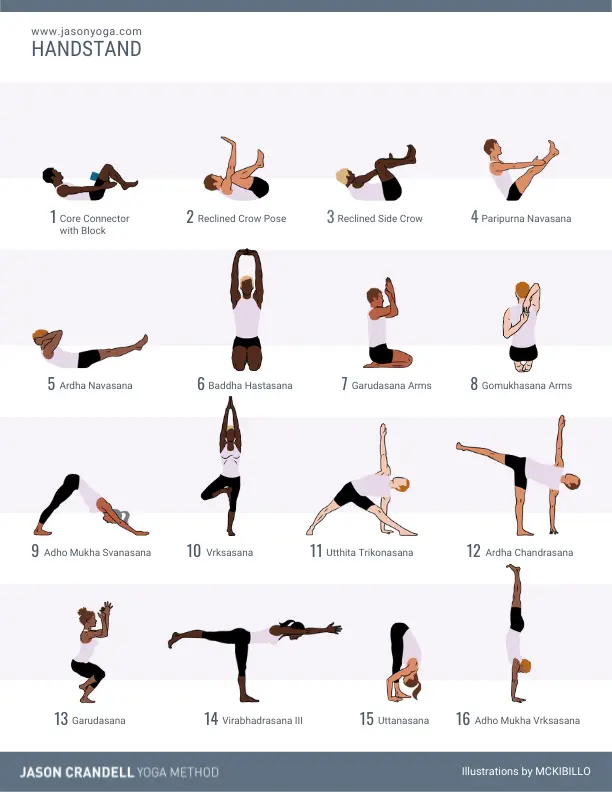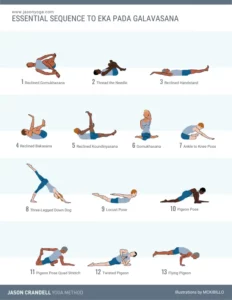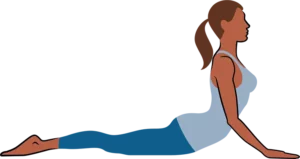I know I’m not alone in my love for Handstand. It’s empowering, strengthening, and fun. Whether you’re working at the wall, in a studio, or trying to do the pose on a paddleboard, the following sequence will help you build a strong, stable Handstand.
Here’s a look at my thought process when putting together the Handstand prep yoga sequence.
I like to include four preparatory stages when teach Handstand:
1. Connect students to the core
2. Connect to the hands
3. Open the shoulders
4. Set the tone for balancing with standing balances.
Encouraging a connection to deep, rhythmic breath is a given—especially in sequences that include challenging postures.
I hope this practice helps you feel more calm, confident, and strong in Handstand! Please let me know how it goes in the Comments below.
Poses 1-5: Core Connection The first five postures in this sequence will awaken all of your abdominal muscles, pelvic floor, and hip-flexors in preparation for the Handstand that is down the road.
Your core plays two primary roles in Handstand. First, your core helps you move the weight of your pelvis as you jump or press into Handstand. Second, your core helps keep your pelvis stacked directly above your ribcage.
Poses 6-8: Shoulder Opening One of the hidden obstacles in Handstand is tight shoulders. If your shoulders are tight (specifically, ball and socket flexion and scapular lateral rotation), it will difficult to establish a vertical plum line. If your body is not well aligned from top to bottom, all of your muscles will have to work even harder to maintain the pose. By practicing these shoulder openers, you will release restrictions and prepare your shoulders for the demands of Handstand.
Pose 9: Connecting to Your Hands Your hands are the single most important component of balancing in Handstand. You have to learn to be mindful of and responsive with your hands in the pose. Down Dog is included in this sequence to provide you the opportunity to focus on your hands and fingers. By rooting down evenly through your fingertips and the circumference of your palms, you will imprint the work you will need to do with your hands in Handstand.
Poses 10-14: Establishing Balance Balancing in Handstand is hard unless you trained as a gymnast or cheerleader when you were a kid. Sure, it’s doable, but it’s still hard. These standing balances will get you in balancing mode. Allow your body to sway slightly and focus on breathing instead of becoming tense and rigid. Notice all of the activity in your feet, toes, and lower legs. These parts of your body in standing balances are equivalent to your hands, fingers, and forearms in Handstand. They have to stay active and responsive to help you maintain balance. I’ve included Triangle Pose in between the other standing balances to provide you with a strong and stable counterpoint.
Poses 15: Turn Upside Down Uttanasana provides a calming, grounding posture before you transition into Handstand.
Pose 16: Peak Pose: Handstand (Adho Mukha Vrksasana) For many students, getting into Handstand is more difficult than balancing in the pose. If getting into Handstand remains elusive, be patient and consistent with this sequence. It’s best to work on the pose in the presence of a qualified instructor until you feel confident getting into the pose on your own.
In the meantime, this sequence will strengthen and open your body and help you make progress. For those of you who can get into Handstand, practice the posture at the wall and focus on holding the pose for longer increments of time—-ideally building up to one minute in the pose before working on balancing in the middle of the room.
Good luck!
{illustrations by MCKIBILLO}
Want more sequences by Jason?
Sign up to join our newsletter and we’ll send you our e-book:
30 Essential Home Practice Sequences.


